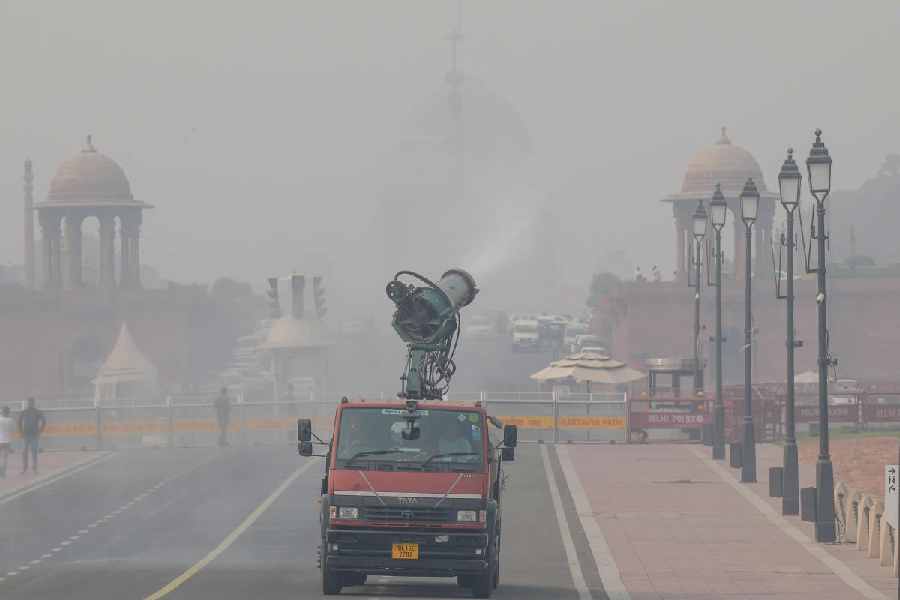Delhi's Air Quality Index (AQI) dropped below 300 for the first time on Sunday after a month as dry northwesterly winds and ample sunlight aided in the dispersion of pollutants.
The air quality in the national capital has oscillated between "very poor" (AQI between 301-400) and "severe" (over 400) categories for the past 32 days.
Delhi's 24-hour average Air Quality Index (AQI) was recorded at 285 at 4 PM on Sunday, an improvement to the "poor" category. The city's air quality was last recorded in the "poor" category on October 29, with an AQI of 268, according to data from the Central Pollution Control Board (CPCB).
On Saturday, the AQI was 346 in the "very poor" category.
The air quality slipped from "poor" to the "very poor" category on October 30 and stayed there for 15 consecutive days before deteriorating further into the "severe" category.
On Sunday, out of 38 monitoring stations in the capital, 11 recorded air quality in the "very poor" category, while the remaining 27 recorded it in the "poor" category, according to the Sameer app.
The CPCB classifies AQI between 0 and 50 as "good", between 51 and 100 as "satisfactory", between 101 and 200 as "moderate", between 201 and 300 as "poor", between 301 and 400 as "very poor", and over 400 as "severe".
The primary pollutant on Sunday was PM2.5, with levels recorded at 114 µg/m ³ at 6 PM.
These fine particles pose significant health risks as they can penetrate deep into the lungs and enter the bloodstream.
Vehicular emissions, as reported by the Centre's Decision Support System (DSS) for Air Quality Management, are typically updated daily at noon.
However, data for Saturday and Sunday was unavailable on the website until 4 PM, with the most recent estimate reflecting Friday's contribution, accounting for 21.6 per cent of Delhi's pollution.
The Air Quality Early Warning System for Delhi observed that the predominant surface wind on Monday morning is likely to come from the northwest direction at speeds below 4 kmph.
Smog and moderate fog are expected in the morning, with wind speeds increasing to less than 8 kmph in the afternoon, before decreasing again to below 4 kmph in the evening and night. Smog or shallow fog is likely to persist in the evening, with a clear sky during the day.
Mahesh Palawat, vice president of meteorology at Skymet, attributed the improvement in air quality to consistent dry northwesterly winds since Saturday, blowing at approximately 8 km/hr.
These winds remained active overnight and increased to 15 km/hr on Sunday, aiding in the dispersion of pollutants.
Furthermore, the absence of dense fog in the region allowed ample sunlight to reach the surface, which helped scatter pollutants and gases as the mixing height stayed relatively high.
It was a sunny Sunday for Delhi residents, with the daytime temperature recorded at 27 degrees Celsius, a notch above normal, according to the IMD.
Humidity fluctuated between 93 per cent and 63 per cent during the day.
The weather department has forecasted moderate fog for Monday, with the maximum and minimum temperatures expected to settle at 27 and 11 degrees Celsius, respectively.
Except for the headline, this story has not been edited by The Telegraph Online staff and has been published from a syndicated feed.










